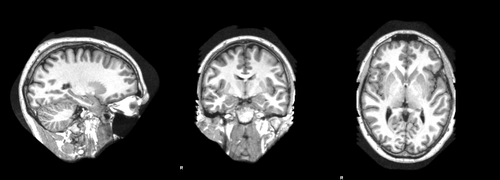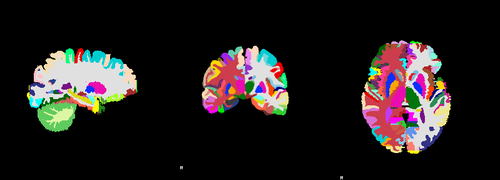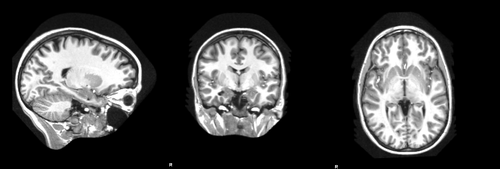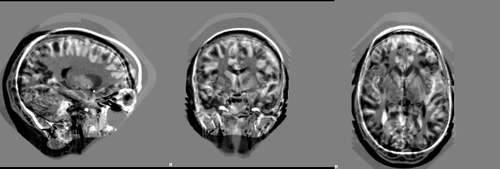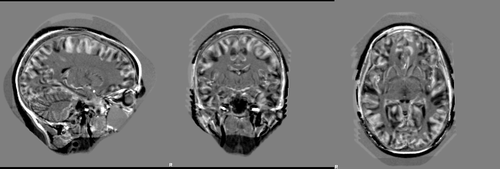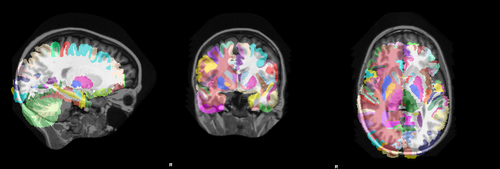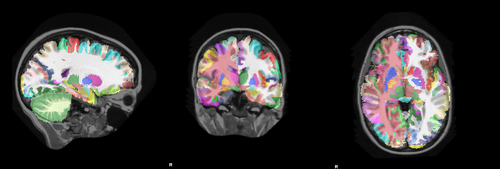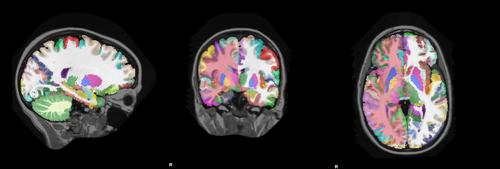Difference between revisions of "NiftyReg Segmentation Propagation Tutorial"
(Created page with "Segmentation propagation uses image registration to transfer segmentations (or labels) from the space of one image to the space of another. Assuming a template image (templat...") |
|||
| Line 21: | Line 21: | ||
[[File:diff nonlin.png|center|500px|thumb|Difference image after non-linear registration]] | [[File:diff nonlin.png|center|500px|thumb|Difference image after non-linear registration]] | ||
| − | By using the two commands above, we used the default parameters for both reg_aladin and reg_f3d. To see all available options, see <code>reg_aladin -help</code> and <code>reg_f3d -help</code>. | + | By using the two commands above, we used the default parameters for both reg_aladin and reg_f3d. To see all available options, see [[reg_aladin|<code>reg_aladin -help</code>]] and [[reg_f3d|<code>reg_f3d -help</code>]]. |
The non-linear transformation parametrisation, ref_template_flo_new_image_nrr_cpp.nii, can now be used to propagate the labels.nii image into the space of template.nii. | The non-linear transformation parametrisation, ref_template_flo_new_image_nrr_cpp.nii, can now be used to propagate the labels.nii image into the space of template.nii. | ||
Revision as of 16:11, 9 March 2015
Segmentation propagation uses image registration to transfer segmentations (or labels) from the space of one image to the space of another.
Assuming a template image (template.nii) and its associated segmentation (labels.nii), on can transfer the label information into the space of another image (new_image.nii). For this example, we used the file 1000_3.nii from neuromorphometrics and its associated segmentation as template and subject 1001_3.nii from the same database as new image. Below are shown the ortho-views (mid-plane along each axis) of the three input images:
First step is to globally (affine) register the image, the template.nii image is used as a floating image and the new_image.nii image is used as a reference:
reg_aladin -ref new_image.nii -flo template.nii -res ref_template_flo_new_image_affine_result.nii \-aff ref_template_flo_new_image_affine_matrix.txt
The following images show the difference images before and after the affine registration.
The affine matrix obtained with reg_aladin, ref_template_flo_new_image_affine_matrix.txt, can now be used to initialise the non-linear registration step:
reg_f3d -ref new_image.nii -flo template.nii -res ref_template_flo_new_image_nrr_result.nii \-aff ref_template_flo_new_image_affine_matrix.txt -cpp ref_template_flo_new_image_nrr_cpp.nii
The following image shows the difference after the non-linear registration.
By using the two commands above, we used the default parameters for both reg_aladin and reg_f3d. To see all available options, see reg_aladin -help and reg_f3d -help.
The non-linear transformation parametrisation, ref_template_flo_new_image_nrr_cpp.nii, can now be used to propagate the labels.nii image into the space of template.nii. Since the labels are binary, we specify to use a nearest-neighbor interpolation scheme:
reg_resample -ref new_image.nii -flo labels.nii -res propagated_labels.nii \-cpp ref_template_flo_new_image_nrr_cpp.nii -inter 0
Note that while resampling, only the non-linear parametrisation is specified, not the affine. The non-linear parametrisation contains the affine since it was used to initialise the non-linear registration.
Images below show the propagated labels into the space of new_image.nii, with no registration, with affine only and with non-linear registration.
